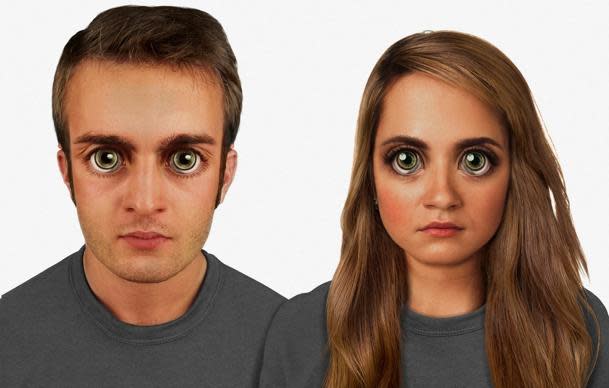 Science and Weather
Science and WeatherCan we guess what humans will look like in 100,000 years?

So is this what we're evolving toward? Well, maybe. What you see above is the result of a thought experiment by artist Nickolay Lamm and Dr. Alan Kwan, who holds a PhD in computation genomics from Washington University. They put their heads together and batted some ideas around about where we might end up in the distant future.
Is this a hardcore scientific prediction? No, and it's not meant to be (although a lot of sources are making out like it is).
[ Related: New study puts southwest B.C. in ‘risk zone’ for mega-earthquake ]
It makes an interesting story to pretend that this is the result of some state-of-the-art genomic model, but there's an important distinction here; this isn't a 'what will be', this is a 'what may be' — the potential end result of 100,000 years of our genetic tinkering, interstellar travel and even changes in taste.
Easy to predict? No. Possible to predict? Probably not. Consider how thinkers in the 50s and 60s figured there'd be flying cars and hotels on the moon in the year 2000. We know how that worked out.
But it's still fun to think about. So how did Kwan and Lamm come up with their rendering?
The most noticeable feature, obviously, the giant anime eyes, they feel might be the result of humankind's travels in space. As we build colonies further from the Sun, or even around dimmer stars elsewhere, we might need to be more sensitive to light. Maybe that will be part of the fashion, too. The two speculate that the average cranium size will increase as our brains grow larger. What goes better with big foreheads than big eyes?
Those big eyes will also need thicker eyelids to help offset the disorienting effects of low or zero gravity that our ISS astronauts combat now. But, while they might seem creepy to us, they'll also allow large 'commlenses' — think Google Glass, but right in your eyes.
The average skin tone of these future humans will be darker. Earthlings will want darker skin to protect against UV radiation if we keep beating up the ozone layer. Spacelings will benefit from more pigment as they travel outside our atmosphere altogether.
Making the assumption that genetic engineering will be not just widely accepted, but actually the norm, Lamm and Kwan also speculate that our features will trend toward things we find attractive; our big-eyed descendants will have supermodel-perfect facially symmetry.
Lamm and Kwan aren't the only ones dabbling in the 'what ifs' of humanity's future.
We already have a universal translator. We have Ray Kurzweil forecasting The Singularity any time now. Mind-reading robots are on Japan's to-do list for 2020. In 2050, you could be living in a building smarter than you are, and, following in the grand tradition of hotels on the moon, in 2060 we'll have a colony on Mars and we'll be able to get there in just 39 days.
[ More Geekquinox: All eyes are on new body part discovery ]
There's some fantastic, and fantastical, speculating out there — the kind that drives us forward by making us think "what if?".
Where do you think we're headed in the future? Colony on Mars? Nuclear winter? Thunderdome? The possibilities are endless.
(Image courtesy: Nickolay Lamm)
Geek out with the latest in science and weather.
Follow @ygeekquinox on Twitter!

